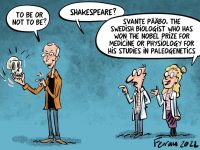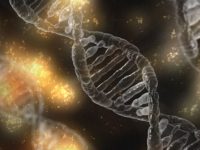Einstein Maric, an unsolved equation
The possible contribution by Mileva Maric to Albert Einstein’s work remains a mystery
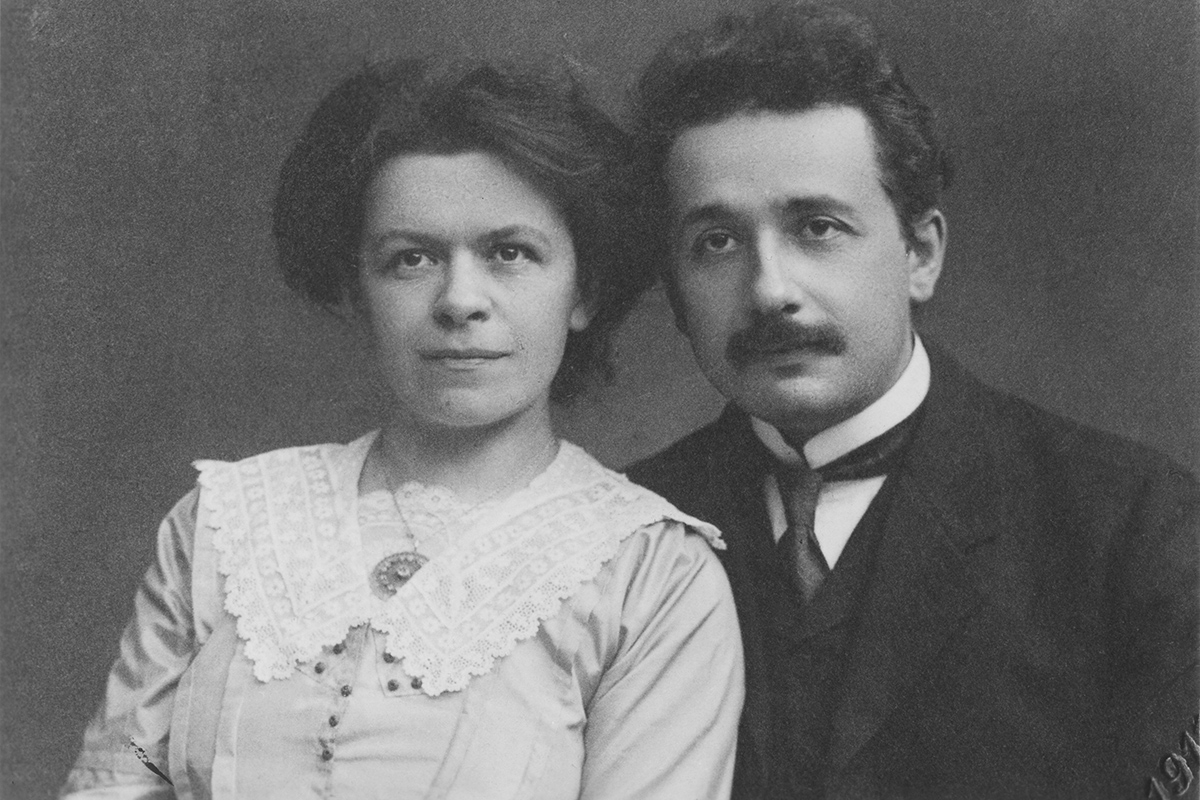
Albert Einstein is the answer to the most brilliant scientific theories of all times. Mileva Maric, however, is an unknown in their authorship. Her possible contribution to her husband’s works is still a matter to be solved within the scientific field.
No one doubts Albert Einstein’s great genius and many people consider him the brightest scientist of the twentieth century. As the Nobel Prize for Physics in 1921 and the author of the relativity theory and the photoelectric effect theory – for which he won the prestigious award – he is situated at the same level as Charles Darwin or Issac Newton within the science world. Less known is Mileva Maric, his first wife and a notable mathematician. Although her figure has no reputation at all, there is a huge debate about her role in Albert Einstein’s works.
Zurich was the origin
Mileva Maric was born in 1875 in the former Austro-Hungarian Empire – current Serbia. She was intelligent and quiet. At a very early age she showed her passion for science, not only with good grades, but also attending conferences aimed exclusively at a male audience.
«The relationship between Einstein and Maric encountered an obstacle in Pauline Koch, his mother, who opposed his son having an intellectual woman as a wife»
The relationship between Maric and Einstein sparked in Zurich. It was 1896 and both studied Physics and Mathematics at the Federal Polytechnic Institute. Over the years the couple became two pieces that fit perfectly. However, the relationship encountered an obstacle in Pauline Koch, Einstein’s mother, who opposed his son having an intellectual woman as a wife. In addition, she limped and was four years older than him. Despite her refusal, the young couple found in each other not only their significant other, but also the support of a professional colleague. In that way, the physicist recognized it in a letter in 1900 (one of the nearly four hundred letters both exchanged): «How lucky I am to have found in you a creature who is my equal, who is as strong and independent as I am myself! Except with you, I feel alone with everybody».
At the end of their studies in 1900, both obtained nearly identical grades. However, only he got the degree. She had to leave Zurich before the final exams. She was pregnant, and if the news spread, it might mean the end of Einstein’s career. She had to take refuge in Serbia with her family in order to hide the news and Maric gave birth to Lieserl, whose fate has always remained a mystery. Later, she came back to Zurich, where she got her degree a year after her husband.
The first questions
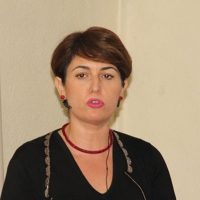
The debate about the contribution of Mileva Maric to Einstein’s work starts in the last third of the twentieth century, when the second wife of Hans Albert Einstein, son of the couple, decided to publish part of the correspondence he kept of his parents.
«The history of Mileva Maric is heart-rending. In this case, the famous saying that behind every great man there is a great woman seems to be true. Her life proves that she has quite a lot of involvement in the work of that great genius who was Einstein», says Lorena Segura, mathematician and science populariser of the University of Alacant.
José Adolfo de Azcárraga, professor of Theoretical Physics at the University of Valencia and member of the Spanish National Research Council (CSIC), has a contrary view on this. «It is natural to try to attribute a scientific paper to Maric, Einstein’s colleague and wife. Perhaps she reviewed some calculations; we have to imagine them as young people, sharing dreams and interests. Also, Einstein’s attitude towards Maric inevitably arouses sympathy for her. However, she did not contribute scientifically to the special theory of relativity of 1905, which is often mentioned as “proof” of that supposed collaboration».
Jesús Navarro, research professor at the CSIC, is shown more skeptical towards any of these two perspectives: «It is not possible to offer a conclusive answer. The problem lies in the fact that there is no relevant information».
«”I will be so happy and proud when we are together and can bring our work on relative motion to a successful conclusion”, Einstein wrote to Maric in 1901»
Relevant or not, the published information acquires many and very varied interpretations. A clear example of this is the fragment of a letter that Einstein wrote to Maric in 1901: «I will be so happy and proud when we are together and can bring our work on relative motion to a successful conclusion». But it is not the only one. Maric spoke of a common work as well, related to relativity, to her friend Helen Kaufner in 1905: «Before leaving on a trip, we have finished an important work by which my husband will be known all over the world».
The most fruitful years
Three years earlier, in 1902, Albert Einstein got his first job, which allowed him to save a small amount of money to be able to get married the following year. Being a full time worker for seven years, he barely enjoyed enough time to investigate on his own. Nevertheless, this was his brightest period, coinciding with his living with Mileva Maric. And thanks to her passion and dedication to science, she covered her husband’s lack of time during the day; at night, they discussed together the various theories that they worked on.

«She contributed to Einstein’s mathematical work», states Lorena Segura. «In fact, it coincides in time, in the sense that his most brilliant contributions took place when he was with Maric». «Any significant physicist has a period of splendor», replicates Jesus Navarro. «At the time he was young and in the fullness of his capacities. Did this happen when he was married to Milena? That is true. Did this happen when he was young? That is also true. Which one do we choose? They go well together, do they not?», concludes professor Navarro.
Particularly relevant is Einstein’s trajectory in 1905. In just a year, he published five great articles in the scientific journal Annalen der Phisik that are still considered the basis of modern physics today. That is why this year is known as his annus mirabilis. Regarding Maric’s possible contribution to these works, Jesús Navarro emphasizes that the mathematics necessary to carry them out «were very simple», except in one of them.
In these works, a special emphasis is placed on the possible joint authorship of Mileva Maric in the theory of special relativity. «This article has only one author, Einstein, and no reference. At the end he just thanks his friend Michele Besso – but not Maric – for “many and varied stimuli”. Publishing such a work without quoting anyone implies that he knew its importance and declared himself the sole creator, as the alpinist who climbs a difficult mountain for the first time and claims it to be his own forever», explains José Adolfo de Azcárraga. According to Jesús Navarro, the mathematics necessary for this last work were more difficult, and «he learned them not from Maric, but from his friend Besso».
«Throughout 1905, Einstein published five great articles that are still considered the basis of modern physics today»
Troemel-Ploetz, a researcher from the German Research Foundation in Bonn, and the director of the magazine where it was published, Abram Joffe, assure that the original manuscripts of the 1905 articles also included the name of Mileva Marica as co-author. However, the articles were published only with Albert Einstein’s signature. «This issue was not even considered», says Lorena Segura. «Women scientists have been silenced for many years, so her signature could not even appear”. On the other hand, Jesús Navarro points out that although it was difficult for women to make research in science, Marie Curie «published in that period as well».
Nevertheless, it is also argued that the decision not to include Mileva Maric’s signature was negotiated with her, who considered that both of them responded to the same entity. «Wir beide sind nur ein Stein», she said. That is to say, «we are both a single stone».

But Mileva Maric’s signature was not the only element that disappeared from these works. Her doctoral thesis, presented in 1901, vanished as well. «There is a physicist, Evan Harris, who claims that the theory of relativity starts with the dissertation that Maric wrote and presented under the supervision of the professor Webber when she studied in Zürich, and whose memory has been lost», explains Lorena Segura. In this vein, Segura also indicates that Maric had a permanent relationship with Nikola Tesla, a genius of the electric field. «She never lost the relationship with him, and that is why many witnesses claim that he had a lot to do with the famous papers of 1905 that catapulted Einstein to the fame», she concludes.
«It is also said that Maric made a visit of several months to Philipp Lenard, a physicist who did some work on the photoelectric effect», explains Jesús Navarro. «As a result of this, they say that everything was due to her. It is possible, and I would say that they discussed things. Her writing this work is a different thing, and that is something we do not know. If we start from the basis that she is the author, there is no room for doubt.»
«The photoelectric effect has its origin in Mileva Maric’s works when she studied with professor Lenard, who was awarded with the Nobel Prize for Physics», says Segura. «Einstein was awarded the Nobel Prize for this experimental work, not for the theory of relativity».
The beginning of the end
The birth of Hans Albert in 1904, and especially of Edward in 1910, who suffered from psychiatric problems, made any further collaboration of Maric with her husband impossible. The professional relationship between the two came to its end. «When their professional relationship began to deteriorate, their personal relationship did as well, to the point where their marriage broke up», says Lorena Segura.
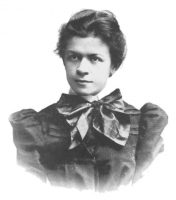
In 1912, Albert Einstein started a relationship with his cousin Elsa, another factor that contributed to the decadence of their marriage. Einstein’s temperament suddenly changed with regard to his wife. The letters of love and happiness that he sent in their youth became letters of repudiation and even sexism: « You will make sure: that my clothes and laundry are kept in good order; that I will receive my three meals regularly in my room; that my bedroom and study are kept neat. You will renounce all personal relations with me insofar as they are not completely necessary for social reasons. […] you will not expect any intimacy from me, nor will you reproach me in any way; you will stop talking to me if I request it; you will leave my bedroom or study immediately without protest if I request it». Faced with this situation, both agreed to divorce in 1919.
«The divorce contract included a clause saying that if Einstein got the Nobel Prize, he would give her the full amount of money received for the prize»
Maric accepted to include a divorce clause by which Einstein would give her the full amount of money received for the prize, if he got the Nobel Prize. In 1921, the famous scientist was awarded the prestigious prize for his contributions to theoretical physics, and especially for his theory of the photoelectric effect. «He received the Nobel Prize also thanks to his theoretical work. It was a way to include the special relativity without mentioning it. If we look at his theory of the photoelectric effect, this is only a small part of his work», explains Jesús Navarro.
The fact that he gave the cash prize to Mileva Maric leads to multiple interpretations. «Some claim that it was in recognition of her work, others that it was a way for her to accept the divorce», explains Lorena Segura. Jesús Navarro proposes another vision: «With the separation, she kept the children, and Einstein did not want anything to do with them. Therefore, that money would be for her, so she could take care of children».
The same thing was written by Einstein in his testament in 1925. Maric, however, did not agree with her ex-husband’s statement, and she even threatened Einstein with bringing all her contributions to his successful work to light, to which the scientist replied as follows: « Have you ever considered, even just for a second, that nobody would ever pay attention to your says if the man you talked about had not accomplished something important. When someone is completely insignificant, there is nothing else to say to this person but to remain modest and silent. This is what I advise you to do».
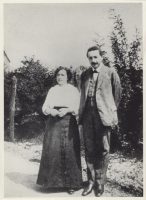
Albert Einstein never spoke publicly about the possible collaboration of his first wife in his work. Even more, he called her an enemy. Maric remained in silence until she died completely alone in 1948 and. Despite their separation, she decided to keep her ex-husband’s surname. «By keeping Einstein surname, she wanted somehow to make clear that she had participated [in his work]», concludes Lorena Segura.
For his part, Albert Einstein married Elsa, who was completely different from Maric. «I’m glad my second wife doesn’t know any science», he said. He considered that it affected women, so he never dared send his daughter to study this discipline. He spent his last years as a professor, until his death in 1955.
Some years later, the first wife of Hans Albert wanted to published the letters that he kept from his parents. However, her attempt was stopped by Helen Dukas and Otto Nathan, main defenders of Einstein’s legacy. «I don’t think that discovering his wife’s figure as a collaborator would affect him. Einstein had other contributors as well», claims Lorena Segura.
«Both executors took care that some personal aspects of his life did not blur his figure». Today, Einstein’s legacy is located at the Hebrew University of Jerusalem. The director of the Einstein Institute of Mathematics, the physicist Hanoch Gutfreund recently assured recently that all the documents are already public. Should this be the case, we will probably not have news until 2029, when the celebration of his 150th birth anniversary renews interest in his figure”, says Azcárraga.
«As the famous scientist claimed: “It’s easier to disintegrate an atom than a prejudice”»
Mileva Maric’s contribution to Einstein’s legacy, or even her possible authorship of some of these renowned works, is one of the great questions in the science world, a discipline accustomed to provide answers to the most complex questions. What we can be sure about, however, is Einstein and Maric’s enormous abilities. One, for his great ideas and intuition, vital in science; and the other, for her mathematical skills. However, the sexist context of that period also had a lot to do with its historical development. As the famous scientist claimed: «It is harder to crack prejudice than an atom».

